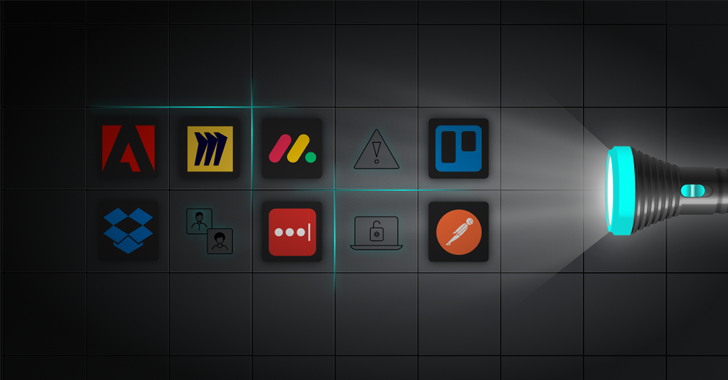Shadow apps, part of shadow IT, are SaaS applications purchased without the approval of security teams. While these applications may be legitimate, they operate within the blind spot of corporate security teams, exposing companies to attackers.
Shadow apps may include instances of software that your company already uses. For example, a development team may onboard their own GitHub instance to isolate work from other developers. They may justify the purchase by claiming that GitHub is an approved application because it’s already used by other teams. However, the new instance is used outside the security team’s line of sight and therefore lacks governance. It may contain sensitive corporate data and lack important protections, such as enabling MFA or enforcing SSO, or have weak access controls. These misconfigurations can easily lead to risks such as source code theft.
Types of Shadow Apps
Shadow apps can be categorized based on how they interact with an organization’s systems. The two most common types are island shadow apps and integrated shadow apps.
Standalone Shadow App
Standalone shadow apps are applications that are not integrated with the enterprise IT ecosystem. They operate as islands isolated from other enterprise systems and are often used for a specific purpose such as task management, file storage, communication, etc. Lack of visibility into their usage can lead to corporate data being mishandled and data being fragmented across various unauthorized platforms resulting in loss of sensitive information.
Integrated Shadow App
Integrated shadow apps are much more dangerous because they connect or interact with an organization’s approved systems through APIs and other integration points. These apps may automatically sync data with other software, exchange information with approved applications, or share access across platforms. As a result of these integrations, threat actors can use shadow apps as a gateway to access integrated systems and compromise the entire SaaS ecosystem.
How Shadow Apps Affect SaaS Security
Data Security Vulnerabilities
One of the main risks of shadow apps is that they may not comply with your organization’s security protocols. Employees using unapproved apps may store, share, or process sensitive data without proper encryption or other protective measures. This lack of visibility and control can lead to data leaks, breaches, or unauthorized access.
Compliance and Regulatory Risk
Many industries are governed by strict regulatory frameworks (GDPR, HIPAA, etc.). Organizations can unknowingly violate these regulations when employees use shadow apps that haven’t been vetted or approved by the organization’s IT or compliance teams. This can lead to costly fines, legal action, and reputational damage.
Expanding the attack surface
Shadow apps expand an organization’s attack surface and provide additional entry points for cybercriminals: these apps may not have strong access controls, allowing hackers to exploit them to gain access to the corporate network.
Lack of visibility and control
To effectively manage and protect company data, IT departments need visibility into the apps being used within their organizations. When shadow apps are in use, IT teams may be unaware of potential threats, unable to detect unauthorized data transfers, or unaware of the risks posed by outdated or insecure applications.
Learn how SSPM can protect your SaaS stack and discover shadow apps
How to spot shadow apps
SaaS Security Posture Management (SSPM) tools are essential for SaaS security. These tools are essential for not only monitoring configurations, users, devices, and other elements of the SaaS stack, but also for discovering all non-human identities, including shadow applications.
SSPM discovers all SaaS applications that connect to another app (SaaS-to-SaaS) and allows security teams to discover integrated shadow apps. It also monitors sign-ins via SSO. When a user signs into a new app with Google, SSPM records that sign-in. Existing device agents connected to SSPM are the third way to see what new applications are onboarded.
Additionally, SSPM has a new way to detect shadow apps. With an innovative approach, SSPM integrates with your existing email security system. When a new SaaS application is introduced, it typically generates a ton of welcome emails, including confirmations, webinar invitations, and onboarding tips. Some SSPM solutions directly access all emails and collect extensive permissions, which can be intrusive. However, more advanced SSPMs integrate with your existing email security system and selectively retrieve only the information they need, allowing for accurate detection of shadow apps without excessive access.
Email security tools regularly scan email traffic for malicious links, phishing attempts, malware attachments, and other email-borne threats. SSPM can leverage the permissions already granted to your email security system, allowing it to detect shadow apps without granting yet another external security tool sensitive permissions.
Another way to detect shadow apps is to integrate SSPM with browser extension security tools that can track and flag user behavior in real time.
The Secure Browser and browser extension log and alert when employees interact with unknown or suspicious SaaS apps. This data is shared with the SSPM platform and compared to the organization’s approved SaaS list. If a shadow SaaS app is detected, SSPM triggers an alert, allowing security teams to properly onboard and protect or offboard the shadow app.
As organizations continue to adopt SaaS applications for increased efficiency and collaboration, the rise of shadow apps is a growing concern. To mitigate these risks, security teams must take proactive measures to discover and manage shadow apps by leveraging SSPM with shadow app discovery capabilities.
Watch a demo of the key security capabilities Adaptive Shield can leverage to protect your entire SaaS stack.









